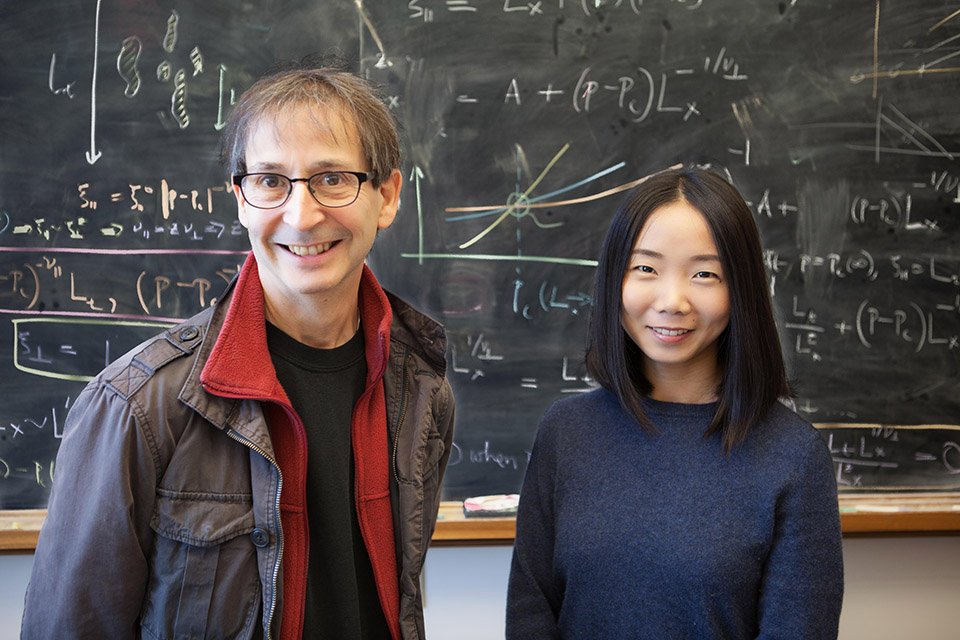If more species are competing for the same resources, we could suppose that only the most suitable can survive, pushing on a different evolutionary trajectory (or even, in rare cases, to extinction) the directly competing species. This idea, called competitive exclusion , has however a problem: in reality it does not work so well.
What we see in the world, where we would expect absolute dominance, is instead a great biodiversity . To solve what for science is a paradox, two researchers, Chi Xue and Nigel Goldenfeld, of the Institute of Genomic Biology of Illinois University, have tried to introduce into the model, which represents an evolutionary process, also ecological variables : in particular, the defined scenario kills the winner ( Kill the Winner ).
UPS AND DOWNS
According to this idea, when a species increases dramatically, before it can cause the disappearance or differentiation of species that exploit the same resources, it becomes an easy target for predators - who can feast on the most abundant species, leaving more "ecological space" to other species.
Researchers Chi Xue and Nigel Goldenfeld tested this theory by analyzing the struggle for survival with mathematical models .
PREY AND PREDATORS
"Take for example strains of competing bacteria," explains Goldenfeld, "each of which is prey to a specific virus: in this scenario, as soon as a particular bacterial species begins to dominate the ecosystem, the virus that normally preys that species will have abundance of food and so will proliferate, breaking down the population of that bacterial strain. After that, another bacterial species could emerge as the largest for some time, until its population is in turn decimated by the virus that prey it. [...] In this way the various species pass through cycles of abundance. "
LIKE A GAS
For Goldenfeld, who also plays the role of director of the Institute of astrobiology of NASA, this mechanism makes possible the coexistence of competing species, preventing the winner from becoming "absolute" and overcoming competition. The theory of killing the winner was already widely shared, but not yet accurately transposed into mathematical language.
To put it to the test, researchers have created a probabilistic model that takes into account the competition between different variants of the same species and the possibility that some of them become extinct. The scheme is relatively simple: how thermodynamic models describe the behavior of gases based on the probability of collisions of atoms and molecules, so this model describes the behavior of viruses and bacteria based on their random "collisions".
SURVIVAL AND COEXISTENCE
The model of Xue and Goldenfeld also illustrates another possibility: if, according to a well-established theory, populations should after some time reach stability, the two researchers have discovered that instead extinction is a much more frequent outcome than you think , because the fluctuations of the populations could bring the number of these to zero (and therefore to the disappearance). But at the same time, researchers suggest that the evolution of ever-new strains of prey, slightly more adapted than previous ones, leads to the "run-up" by predators in what evolutionists call "arms race".
EXTRATERRESTRIAL BACTERIA
This theory and its mathematical representation are not only useful for marine biology, explains Goldenfeld, but also for the search for life on extraterrestrial worlds:
"The diversity of ecosystems, especially microbial ones, is a key factor in understanding the probability of life may emerge at the planetary level not only to survive, but also to be detectable.
According to Goldenfeld, marine microbial ecology will be of primary importance for astrobiology, especially in light of the discoveries of water oceans beneath the surface of the Europa and Enceladus satellites.
"Understanding the fundamental mechanisms that drive biodiversity and characterize terrestrial ecosystems will help us predict the observability of alien life on worlds that will be within reach of our probes in the coming decades."

